The allure of the Himalayas is undeniable, drawing adventurers from across the globe to its majestic peaks and serene valleys. Among Nepal’s myriad trekking destinations, the Kanchenjunga region stands as a testament to raw, untamed beauty. Home to Kanchenjunga, the world’s third-highest mountain, this remote eastern frontier offers an unparalleled trekking experience. It’s a journey into pristine wilderness, vibrant indigenous cultures, and breathtaking vistas that few have the privilege to witness.
However, unlike some of Nepal’s more frequented trails, Kanchenjunga is not a trek to be undertaken lightly. It’s a challenging, high-altitude expedition into a restricted area, demanding careful preparation and a deep understanding of its unique requirements. One of the most frequently asked questions by aspiring Kanchenjunga trekkers is: “Do I need a trekking guide for Kanchenjunga Treks?”
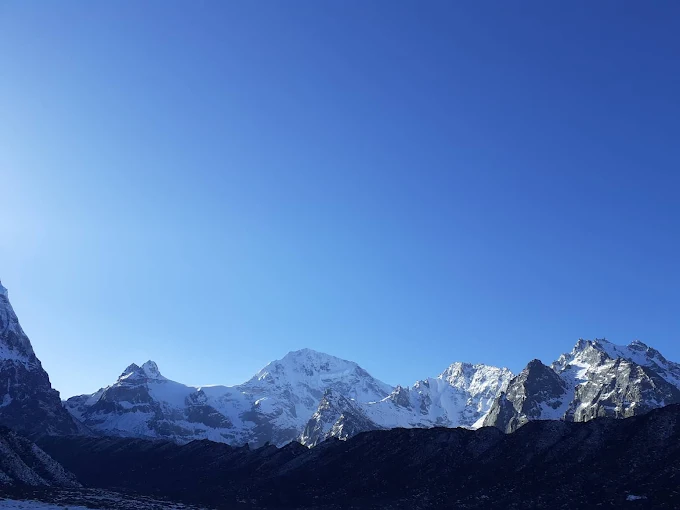
The unequivocal answer is YES, absolutely. Not only is it highly recommended for your safety and to enhance your experience, but as of recent regulations by the Nepal Government, it is mandatory to trek in the Kanchenjunga region with a licensed trekking guide and as part of a minimum group of two trekkers. Solo trekking is strictly prohibited.
At Lekbesi.com, we understand the intricacies of navigating restricted areas like Kanchenjunga and are fully equipped to provide you with the expert guidance and logistical support necessary for a safe, successful, and truly unforgettable Kanchenjunga adventure. While our range of services extends from spiritual tours to motorbike tours and more, our core expertise lies in crafting exceptional trekking experiences across Nepal’s diverse landscapes, including the challenging Kanchenjunga region.
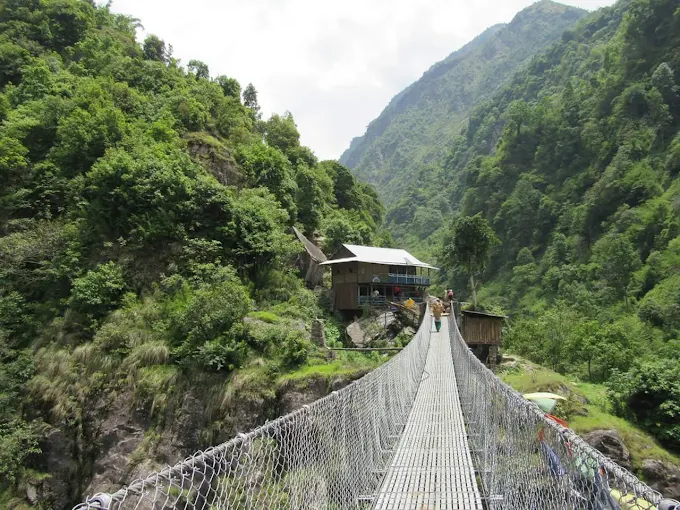
Why a Trekking Guide is Not Just Recommended, But Essential for Kanchenjunga
The Kanchenjunga trek is classified as a strenuous and challenging expedition. Its remoteness, the altitude, unpredictable weather patterns, and the need for specific permits make a knowledgeable and experienced guide an indispensable part of your journey. Let’s delve into the compelling reasons why a trekking guide is vital for Kanchenjunga:
1. Navigating Restricted Area Regulations and Permits: The Bureaucratic Maze
The Kanchenjunga Conservation Area falls under Nepal’s restricted trekking zones due to its proximity to international borders and its ecological sensitivity. This means obtaining the necessary permits is a complex process that cannot be undertaken independently by foreign trekkers.
- Restricted Area Permit (RAP): This is the most crucial permit and can only be obtained through a government-registered trekking agency like Lekbesi.com. It requires a minimum of two trekkers in a group, accompanied by a licensed guide. Solo trekkers are prohibited. The cost for the RAP is typically USD 20 per person per week for the first four weeks and USD 25 for each additional week.
- Kanchenjunga Conservation Area Project (KCAP) Permit: This permit is required to enter the Kanchenjunga Conservation Area. While theoretically obtainable by individuals at the Nepal Tourism Board’s service center in Kathmandu, it’s far more convenient and often managed by your trekking agency as part of your package. The cost is generally around NPR 2,000 (approximately USD 15-20).
- TIMS Card (Trekkers’ Information Management System): Importantly, a TIMS card is not required for Kanchenjunga if you have the Restricted Area Permit, as the RAP serves a similar purpose of tracking trekkers in the restricted zone.
Your guide and the trekking agency handle all the paperwork, ensuring that your permits are correctly applied for and issued, saving you invaluable time and preventing potential legal issues or fines. They understand the nuances of the application process and can navigate any unforeseen hurdles. From February 2024, Nepal’s permit system has seen a significant digital transformation, making the process smoother for agencies to apply on your behalf.
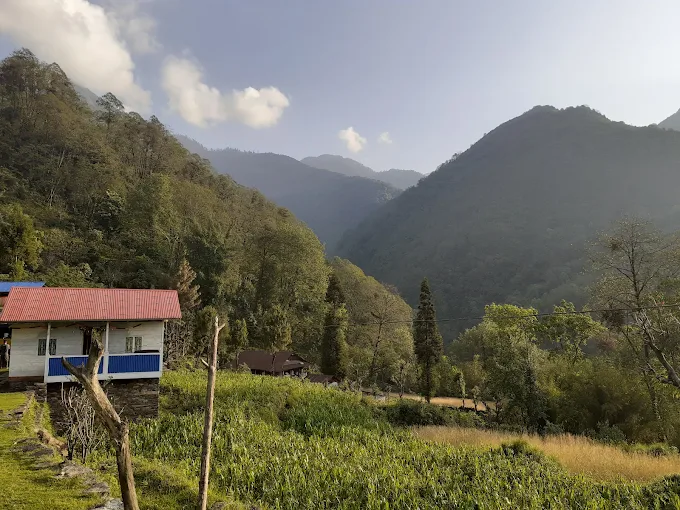
2. Unparalleled Safety: Your Guardian in the Wilderness
Safety is paramount in the Himalayas, especially on a demanding trek like Kanchenjunga. A professional trekking guide is your first line of defense against the inherent risks of high-altitude trekking.
- Altitude Sickness Management: The Kanchenjunga trek reaches altitudes exceeding 5,000 meters (Pangpema, North Base Camp is around 5,140m, and South Base Camp is around 4,730m). Your guide is trained to recognize the early signs of Acute Mountain Sickness (AMS), HACE (High Altitude Cerebral Edema), and HAPE (High Altitude Pulmonary Edema). They know the golden rules of acclimatization – “climb high, sleep low,” gradual ascent, and proper hydration – and will ensure your itinerary allows for adequate acclimatization days. In case of severe symptoms, they can administer basic first aid and, critically, initiate emergency evacuation procedures.
- Navigation Expertise: Kanchenjunga’s trails, while stunning, are often less defined and can be challenging to follow, especially in adverse weather conditions or during the off-season. There’s limited mobile network coverage in many parts of the region. A local guide possesses intimate knowledge of the terrain, potential shortcuts, safest paths, and areas prone to landslides or avalanches. They use a combination of traditional wayfinding, maps, and GPS to keep you on track, preventing you from getting lost in this vast wilderness.
- Emergency Response: In the remote Kanchenjunga region, help is not always readily available. A guide is trained in wilderness first aid and knows how to react swiftly and effectively in emergencies, whether it’s an injury, sudden illness, or a natural hazard. They have contacts with local authorities and rescue services, ensuring a timely response if a medical evacuation becomes necessary.
- Weather Awareness: Himalayan weather is notoriously unpredictable. A guide monitors weather patterns, understands local conditions, and can make informed decisions about adjusting the itinerary to avoid dangerous situations like heavy snowfall or storms.
3. Cultural Immersion and Local Connection: Beyond the Scenery
Nepal’s Himalayas are not just about mountains; they are home to rich and diverse ethnic communities. Your trekking guide acts as a bridge, enhancing your cultural experience in profound ways.
- Language Barrier: Many locals in remote Kanchenjunga villages may not speak English. Your guide, fluent in Nepali and often local dialects, facilitates communication, allowing for genuine interactions with villagers, teahouse owners, and monks.
- Cultural Insights: Guides, often hailing from similar mountain communities, can offer invaluable insights into local customs, traditions, spiritual beliefs, and daily life. They can explain the significance of stupas, monasteries, and prayer flags, enriching your understanding of the region’s heritage. They might even introduce you to local families, offering a rare glimpse into authentic Himalayan life.
- Hidden Gems: Beyond the main trail, guides often know about secluded viewpoints, hidden waterfalls, or small, traditional villages that are not on standard maps. They can lead you to these secret spots, offering unique photo opportunities and a deeper connection with the landscape.
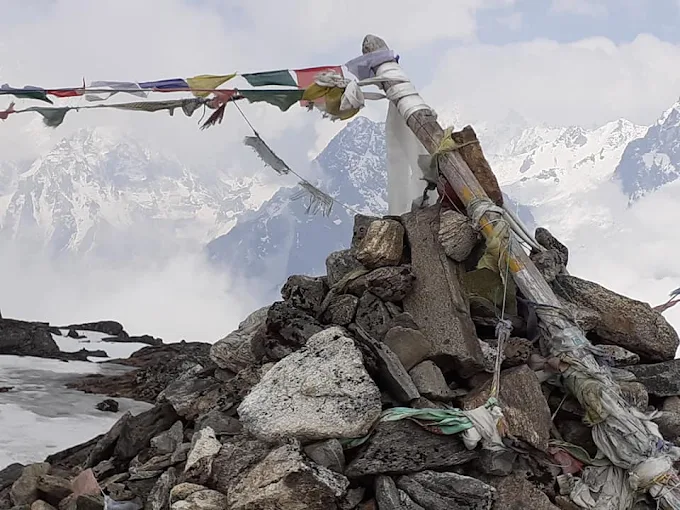
4. Logistical Support and Stress-Free Trekking: Focus on the Journey
Planning a multi-day trek in a remote area involves numerous logistical challenges. Your guide and trekking agency handle these complexities, allowing you to focus purely on enjoying the trek.
- Accommodation and Food: In Kanchenjunga, teahouse facilities are basic and can be limited, especially in higher altitudes or during peak season. Your guide ensures that accommodations are pre-arranged or secured, and that you have access to meals, often helping negotiate prices or explaining local menu options.
- Porter Management: If you opt for porters to carry your heavy gear, your guide manages their services, ensuring fair wages, proper load distribution, and clear communication, benefiting both you and the local economy.
- Route Planning and Flexibility: While you’ll have a planned itinerary, a good guide understands the need for flexibility. They can adjust the pace based on your fitness, weather conditions, or any unexpected events, always prioritizing your well-being.
- Problem Solving: From minor issues like finding specific gear to major challenges like trail blockages, your guide is equipped to handle unexpected situations, ensuring a smooth flow to your trek.
5. Supporting Local Economy and Ethical Tourism: Making a Difference
Hiring a licensed Nepali trekking guide contributes directly to the local economy and promotes responsible tourism.
- Sustainable Livelihoods: Your payment for a guide’s services provides a direct income for a Nepali individual and their family, supporting the communities you are visiting.
- Knowledge Transfer: Many guides from local communities are trained professionals, holding licenses from the Nepal Government. By hiring them, you support the growth of skilled tourism professionals in Nepal.
- Responsible Practices: Reputable trekking agencies and their guides adhere to “Leave No Trace” principles and promote responsible waste management, helping preserve the pristine environment of the Kanchenjunga Conservation Area.
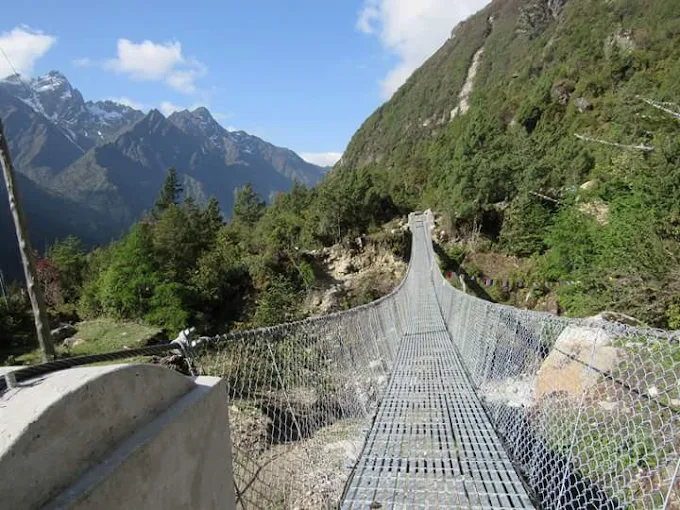
Understanding the Kanchenjunga Trek: What to Expect
Before embarking on this incredible journey, it’s crucial to have a clear understanding of what the Kanchenjunga trek entails.
Difficulty Level: Strenuous and Demanding
The Kanchenjunga trek is rated as strenuous or challenging. It involves:
- High Altitude: Reaching over 5,000 meters, requiring proper acclimatization.
- Long Duration: Typically 20-25 days, including travel to and from Kathmandu.
- Rugged Terrain: Steep ascents and descents, rocky paths, glacier moraines, and occasional snow crossings, particularly over passes like Sele La.
- Remoteness: Limited infrastructure, basic teahouse facilities, and scarce communication.
- Variable Weather: Rapid changes in weather are common, with potential for snow, rain, and strong winds. It doesn’t require technical climbing skills, but a good level of physical fitness is essential.
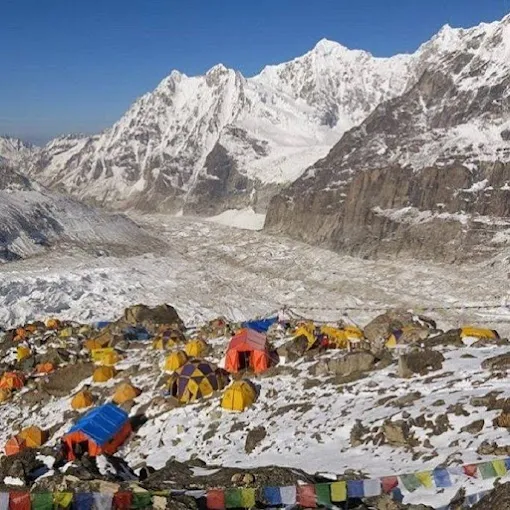
Best Time to Trek Kanchenjunga
The most favorable seasons for the Kanchenjunga trek are:
- Spring (March to May): Rhododendrons and other wildflowers bloom, lower altitudes are lush and green, and temperatures are moderate. Views are generally clear, though occasional pre-monsoon showers can occur.
- Autumn (Late September to Mid-December): This is widely considered the best time. The monsoon clears the skies, offering crystal-clear views of the mountains. Temperatures are comfortable, and the air is crisp.
Avoid the monsoon season (June to August) due to heavy rainfall, slippery trails, and leeches, and deep winter (January to February) due to extreme cold, heavy snow, and potential trail closures, especially at higher elevations and passes.
Kanchenjunga Trek Route Highlights (A Sample Itinerary)
The Kanchenjunga Circuit Trek typically involves visiting both the North and South Base Camps, offering diverse perspectives of the majestic peak. A typical 20-25 day itinerary might look like this:
- Day 1-2: Arrival in Kathmandu & Preparation: Land in Kathmandu, transfer to hotel, and attend a trek briefing. Final permit processing and gear check.
- Day 3: Fly to Bhadrapur & Drive to Ilam: A scenic flight to Bhadrapur, followed by a picturesque drive to the tea gardens of Ilam.
- Day 4: Drive to Taplejung: A longer drive to Taplejung, the trekking hub of the Kanchenjunga region.
- Day 5: Drive to Sekathum or Japantar: Continue by jeep to the actual trailhead, adjusting based on road conditions.
- Day 6: Sekathum/Japantar to Amjilosa: Begin the trek, entering the Kanchenjunga Conservation Area.
- Day 7: Amjilosa to Gyabla: Trek through forests and along riverbanks.
- Day 8: Gyabla to Ghunsa: A significant ascent to Ghunsa, a beautiful Sherpa village.
- Day 9: Acclimatization Day in Ghunsa: Rest and explore around Ghunsa, perhaps a hike to a nearby monastery to aid acclimatization.
- Day 10: Ghunsa to Kambachen: Trek through alpine landscapes.
- Day 11: Acclimatization Day in Kambachen: Another vital acclimatization day, with options for short hikes to higher viewpoints.
- Day 12: Kambachen to Lhonak: Continue towards the higher regions, with stunning views of the mountains.
- Day 13: Day Trip to Kanchenjunga North Base Camp (Pangpema): The highlight of the northern route. Trek to Pangpema for unparalleled views of Kanchenjunga’s north face and its glacier. Return to Lhonak or Kambachen.
- Day 14: Lhonak/Kambachen to Ghunsa: Retrace your steps back to Ghunsa.
- Day 15: Ghunsa to Sele La: A challenging day, crossing the high pass of Sele La (4,290m) to connect to the southern route.
- Day 16: Sele La to Cheram: Descend from the pass to Cheram.
- Day 17: Day Trip to Kanchenjunga South Base Camp (Oktang/Ramche): Trek to the South Base Camp for different perspectives of Kanchenjunga, including the majestic Yalung Glacier. Return to Cheram.
- Day 18: Cheram to Torongding: Begin the descent.
- Day 19: Torongding to Yamphuding: Continue descent through diverse landscapes.
- Day 20: Yamphuding to Khebang: Trek further down towards the lower altitudes.
- Day 21: Khebang to Khamdime: The final day of trekking to Khamdime.
- Day 22: Drive to Bhadrapur: A long drive from the trailhead back to Bhadrapur.
- Day 23: Fly to Kathmandu: A flight back to Kathmandu, concluding your epic Kanchenjunga journey.
- Day 24: Departure: Final departure from Kathmandu.
This itinerary is flexible and can be adjusted based on your preferences, fitness level, and the prevailing conditions.
Your Kanchenjunga Adventure with Lekbesi.com
At Lekbesi.com, we are more than just a travel agency; we are your dedicated partners in crafting unforgettable Himalayan adventures. With over 14 years of experience in travel marketing by our owner, Bikash Tamang, and a commitment to sustainable and eco-tourism since 2021, we ensure that your Kanchenjunga trek is not only safe and successful but also deeply enriching. When you choose us for your Kanchenjunga trek, you benefit from:
- Licensed and Experienced Guides: Our guides are government-certified, highly experienced in the Kanchenjunga region, and possess extensive knowledge of the terrain, culture, and safety protocols. They are trained in first aid and emergency response, ensuring your well-being at all times.
- Tailored Itineraries: We can customize your Kanchenjunga trek itinerary to match your fitness level, time constraints, and specific interests, ensuring a pace that allows for optimal acclimatization and enjoyment.
- Comprehensive Logistics: We handle all aspects of your trek, allowing you to focus purely on the breathtaking landscapes:
- Permit Acquisition: Stress-free processing of your Restricted Area Permit (RAP) and Kanchenjunga Conservation Area Project (KCAP) permit, navigating the necessary government procedures.
- Transportation: Arranging all necessary flights (Kathmandu to Bhadrapur) and comfortable ground transfers to the trailhead (Taplejung).
- Accommodation & Meals: Pre-booking teahouses and ensuring comfortable stays with nutritious meals throughout your trek, keeping in mind the basic facilities available in remote areas.
- Porter Services: Organizing reliable and ethical porters to carry your heavy gear, ensuring their fair treatment and wages, and lightening your load.
- Safety Measures: Providing essential safety equipment and ensuring your guide carries a comprehensive first-aid kit and knows emergency procedures.
- Transparent Pricing: Our packages are all-inclusive with no hidden costs, giving you peace of mind and allowing you to budget effectively for your adventure.
- Pre-Trek Briefing: Before you embark, we provide a detailed briefing, covering everything from what to pack to what to expect on the trail, ensuring you are well-prepared physically and mentally.
- 24/7 Support: Our dedicated team is available round-the-clock for any queries or emergencies during your trek, providing continuous support and peace of mind.
- Commitment to Responsible Tourism: We adhere to ethical practices, respecting local communities, minimizing environmental impact, and ensuring fair treatment of our staff. Our aim is to foster sustainable tourism that benefits both travelers and the local environment.
The Kanchenjunga Trek: An Investment in Unforgettable Memories
Trekking Kanchenjunga is not just a physical challenge; it’s a journey for the soul. It’s about stepping away from the ordinary and immersing yourself in a world of unparalleled natural grandeur and profound cultural experiences. The panoramic views of the entire Kanchenjunga massif, the chance to spot rare wildlife like the elusive red panda or snow leopard (if you’re incredibly lucky!), and the warmth of the local communities make this trek truly unique.
By choosing a reputable agency like Lekbesi.com and trekking with a licensed guide, you are not just fulfilling a regulatory requirement; you are investing in your safety, enhancing your cultural immersion, and ensuring a smooth, well-supported adventure. Your guide will be your navigator, translator, confidant, and friend, enriching every step of your journey. They bridge the gap between traveler and local culture, bringing the landscape and its people to life in a way that independent trekking cannot.
Don’t let the complexity of permits or the remoteness of the region deter you from pursuing this incredible Himalayan dream. Let Lekbesi.com be your trusted partner in unlocking the mysteries and majestic beauty of the Kanchenjunga region. Our goal is to provide you with an experience that is not only safe and comfortable but also deeply personal and profoundly memorable.
Ready to embark on your Kanchenjunga adventure?
Contact Lekbesi.com today to discuss your trekking plans, get a tailored itinerary, and secure your place on this extraordinary journey.
Whatsapp +977 9866551703